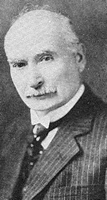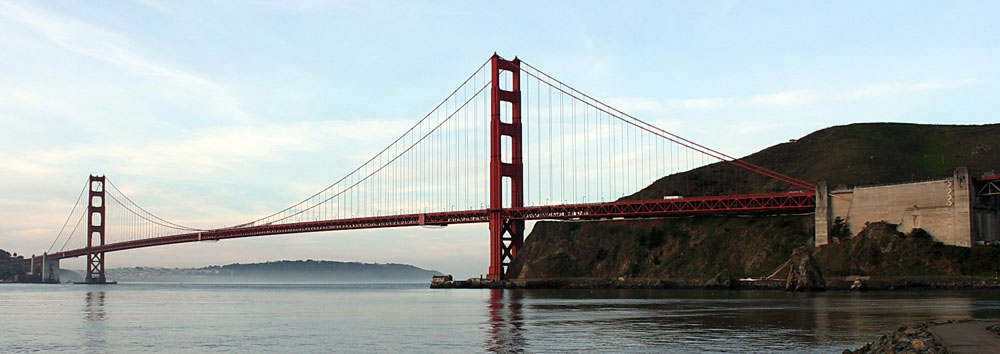
In 1916, more than four decades after railroad entrepreneur Charles Crocker’s call for a bridge across the Golden GateStrait* (Strait) in 1872, James H. Wilkins, a structural engineer and newspaper editor for the San Francisco Call Bulletin, captured the attention of San Francisco City Engineer Michael M. O’Shaughnessy.
In August 1919, City officials formally requested that O'Shaughnessy explore the possibility of building a bridge that crossed the Golden Gate Strait. O’Shaughnessy began to consult a number of engineers across the United States about feasibility and cost of building a bridge across the strait. Most speculated that a bridge would cost over $100 million and that one could not be built. But it was Joseph Baermann Strauss that came forward and said such a bridge was not only feasible, but could be built for $25 to $30 million.
On June 28, 1921, Strauss submitted his preliminary sketches to O’Shaughnessy and Edward Rainey, Secretary to the Mayor of San Francisco, the Honorable James Rolph. The cost estimate for his original design, a symmetrical cantilever-suspension hybrid span (click here for an article about the original design) was $17 million.
It took O’Shaughnessy a year and one-half to release the cantilever-suspension hybrid bridge design to the public. During this time, Strauss went about promoting the idea of a bridge, using his original design, in communities throughout northern California. Strauss dedicated himself to convincing civic leaders that the span was not only feasible but it could be paid with toll revenues alone. His energies paid off, as once his design was made public by O’Shaughnessy in December 1922, the public voiced little opposition, even though it was described as “ugly” by the local press.

Preliminary design by Strauss
|
| |
|

A suspension span replaces the first design
|
Strauss was the steadfast believer who organized the political, financial, and promotional efforts to build the Bridge. The time was right to span the Strait as population centers were growing and traffic congestion at the ferry docks was becoming intolerable. By 1929, motor vehicle travel via ferry had exploded, with demand exceeding available capacity. But there were no federal or state funds available to build a bridge because the construction of the San Francisco-Oakland Bay Bridge had already received the limited federal funds available.
1928 Special District is Formed
1930 Bond Measure Passes
*The Golden Gate Strait is the entrance to the San Francisco Bay from the Pacific Ocean. The strait is approximately three-miles long by one-mile wide with currents ranging from 4.5 to 7.5 knots. It is generally accepted that the Strait was named “Chrysopylae” or Golden Gate by John C. Frémont, Captain, Topographical Engineers of the U.S. Army circa 1846. It reminded him of the harbor Byzantium in Istanbul named Chrysoceras or Golden Horn.